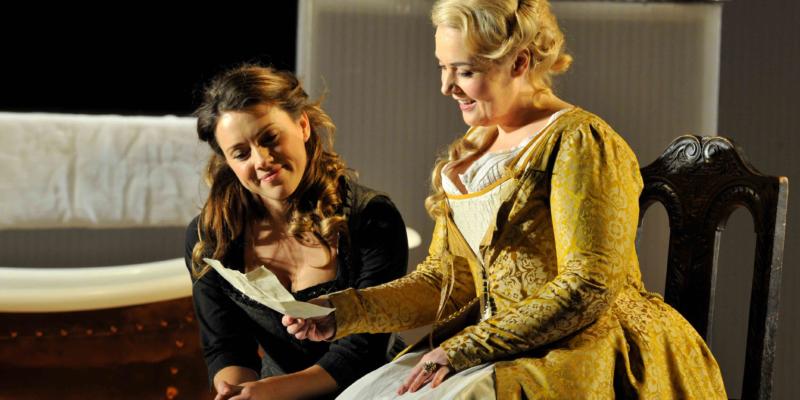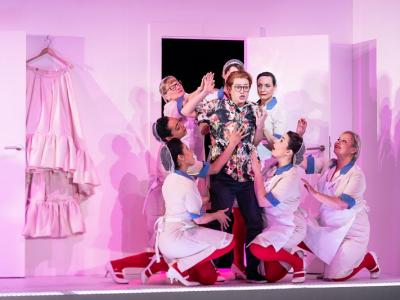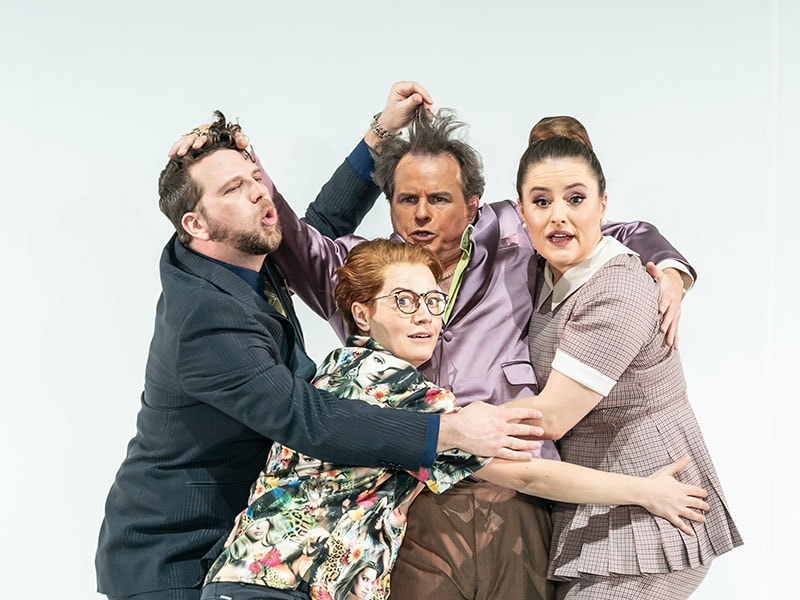Mozart's Most Famous Music: Where to Start
The Austrian composer may have only been alive for 35 short years, but that was more than enough time to write some of our most famous classical music today. Virtually all of Wolfgang Amadeus Mozart’s best-known symphonies, piano concertos and operas were created in the final decade of his life, whilst he was living in Vienna.
Although there are almost too many to choose from, here’s seven you’ve almost certainly heard before.
Queen of the Night aria – The Magic Flute
Video
The Magic Flute, or Die Zauberflöte, was one of the few operas by Mozart set to a German libretto. The Queen of the Night aria, or ‘Der Hölle Rache’, was originally written for Mozart’s sister-in-law Josepha Hofer, specifically to show off her vocal range, although it is thought the composer was somewhat underwhelmed with her performance. The soprano clearly thrived singing the demanding, and hair-raising, coloratura, singing the role for ten years, finally stepping down in 1801, aged 43.
Best-known for the fast repetition of a high C and reaching several top F’s, this aria challenges even the best sopranos. Take a look at some of opera’s greatest soprano roles.
Overture – The Marriage of Figaro
Video
Written just five years before his untimely death, The Marriage of Figaro is one of Mozart’s most successful operas to this day. Surprisingly, at the time of its Viennese premiere in 1786, The Marriage of Figaro, was only moderately successful. Although, by the third performance the encores had almost doubled its performance time.
The opera itself is filled with recognisable music, but there is none quite so well known as the Overture. The Marriage of Figaro takes place over ‘one crazy day’, a theme which is reflected in the fast and slow tempos and loud and soft dynamics of the opera’s introduction.
The somewhat complex story follows the schemes of Figaro and his master, the Count, on Figaro’s wedding day. A tale of love and deception, Figaro and his wife Susanna plot against the count and his adultering ways, so that everyone can live happily ever after!
Sull’aria – The Marriage of Figaro
Video
The film The Shawshank Redemption brought Mozart’s operas to the masses in the 1990s, specifically The Marriage of Figaro’s ‘Sull’aria’.
In the famous scene, the opera’s Countess and Susanna can be heard singing to one another, as the music is played out into the jail’s courtyard – watch the scene.
Lacrimosa - Requiem in D Minor
Video
Mozart’s Requiem was the maestro’s final, unfinished work. Written in the twilight weeks of his life, the mass was partially complete at the time of the composer’s death in 1791, with an outline of the rest of the piece found amongst his writings. The ‘completed’ form we know today was completed by Franz Xaver Süssmayr in 1792, and remains one of the finest requiems still regularly performed today.
The Lacrimosa (‘weeping/tearful’) section is likely the most famous part of the Requiem, having regularly been used as ‘dramatic’ music to use in films, tv shows and more. As with all the text sung in the piece, the Lacrimosa is sung in Latin, with text derived from the Catholic Dies Irae text written by Thomas of Celano, a 13th Century Italian friar.
Serenade No. 13 in G Major, K 525
Video
You might not recognise this piece by name, but you will have heard it before. Serenade No. 13 in G Major, K 525 or ‘Eine kleine Nachtmusik’ as it is informally known, was Mozart’s most famous serenade (chamber work intended for light entertainment).
The reason the piece was composed has never been fully established, but we do know he wrote the score at the same time he was working on Don Giovanni, in 1787.
Can’t quite work out where you’ve heard this piece before? Perhaps it was in this TV advert…
Symphony No. 40 in G Minor, K. 550
Video
Mozart’s 40th symphony was composed in the summer of 1788, and reflects the composer’s interest in the artistic movement Storm and Stress (Sturm und Drang).
His work has elicited varying interpretations from critics, but the most common perception today is that the symphony is tragic in tone and intensely emotional, a work of passion, violence and grief.
Although interpretations differ, the symphony is unquestionably one of Mozart’s most greatly admired works, and it is frequently performed and recorded.
Piano Sonata No. 11 in A Major, K 331 - III. Rondò alla Turca
Video
A Sonata is a type of musical composition, usually intended for a solo instrument, consisting of a number of different musical characteristics called ‘movements’. Mozart’s Sonata No.11 was written for a piano, and consists of three movements, the third, the ‘Alla Turca’, being the most famous.
The whole piece takes around 20 minutes to play all the way through. You might not recognise the third movement by name, but you will have heard it before – it’s regarded as one of Mozart’s best-known piano pieces.






